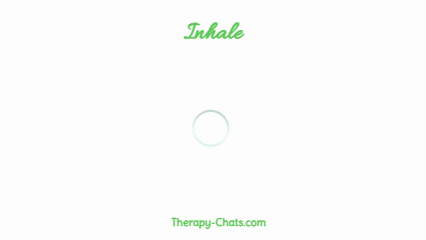1 Minute to Relieve Stress Breathing Exercise
Please follow the diagram to Breathe In, Hold & Breathe Out slowly.

In-Depth Relaxation Exercise for Body & Mind
Somatic Breathing
Benefits Overview
This combined somatic and breathing exercise helps you release physical tension—especially in the shoulders or other tight areas—while also calming stressful emotions.
By bringing mindful awareness to your body and coordinating breath with gentle movement, you improve body-mind connection, reduce muscle tightness, and promote emotional release.
Regular practice can enhance relaxation, lower anxiety, and increase your capacity to manage stress more effectively in daily life.
Step 1. Preparation
-
Find a comfortable seated or lying position.
-
Keep your back straight, but don't strain.
-
Relax and lower your shoulders, keep your chest open, and maintain a stable and comfortable posture.
Step 2. Body Scan & Awareness
-
Gently close your eyes and bring your attention to your shoulders.
-
Notice any areas of tension or tightness without trying to change anything, just observe.
Step 3. Slow Deep Breathing
-
Inhale deeply through your nose for 4 counts, feeling your belly and chest expand.
-
Hold gently for 4 counts.
-
Exhale slowly for 6 counts, allowing your body to soften and relax
Step 4. Somatic Movement & Release
-
On your next inhale, gently lift your shoulders toward your ears, keeping your chest open and relaxed.
-
Hold this position briefly, noticing the tension building.
-
As you exhale, slowly lower your shoulders away from your ears, releasing the tension with your breath.
Step 5. Repeat Movement and Breathing
-
Repeat the breathing and shoulder-raising-relaxation movement seven times.
-
Observe your tense muscles and emotions, and release the tension through your breathing.
Step 6. Emotional Awareness & Release
-
After the final movement, bring your focus to any intensive emotions present.
-
Name these feelings softly in your mind (for example, stress, tightness, or anxiety).
-
Breathe in deeply, and as you exhale, imagine the stress/emotions flowing out of your body with each breath.
-
Repeat the breathing exercise multiple times according to your own situation to release your emotions.
Step 7. Grounding and Closure
-
Place your hands on your heart.
-
Take three slow, deep breaths, feeling grounded and calm.
-
When you’re ready, gently open your eyes and carry this peace with you for a whole day.
If you want audio instructions, please fill in the following form:


